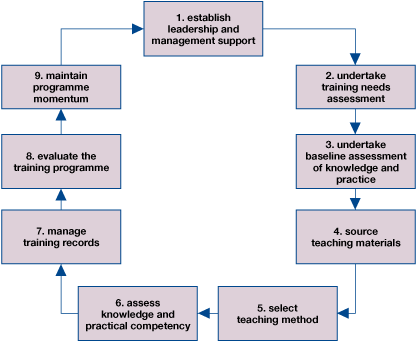Submitted by obuadmin on
Directive 2005/62/EC (Annex: 2.1) requires that personnel in Blood Establishments shall be trained and assessed to be competent in the their tasks. This chapter provides an introduction to some of the practical issues that are likely to be encountered if this requirement were to be applied – for example to comply with a national regulation - to all staff who have a role in the clinical transfusion process.
Some of the challenges that may have to be overcome to provide effective training and assessment for hospital staff are:
- The large number of individuals and the range of different employment groups who have some involvement in the process
- Rapid turnover of staff ( for example due to training requirements for clinical staff)
- Working patterns – shiftwork, part time work
- Multiple employers – eg agencies providing nurses and doctors, external contractors for support services
- Language differences due to mobility of personnel within the EU
- Differences in education, training and the details of practice experience of personnel from different member states
Education and training is fundamental to every aspect of blood transfusion safety. The development of guidelines and S.O.P.’s is insufficient to alter clinical practice: they must be used. As well as meeting EU requirements, it is important to comply with any national requirements for training staff involved in transfusion. Although every EU country will have different access to resources and facilities, there are a number of essential steps to consider when implementing an education and training programme in transfusion.
Figure 10.1 Example of the steps for implementing an education and training programme

